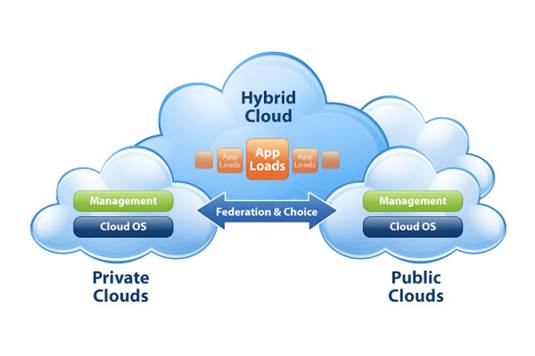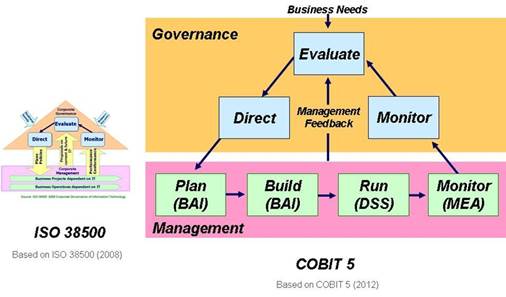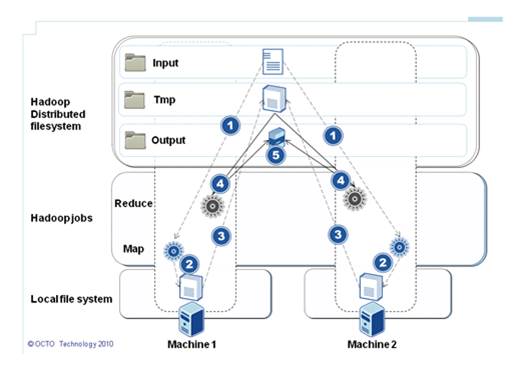Locking up data that moves between
private and public clouds can be a slippery problem
If 2013 is the year enterprises begin
implementing their hybrid cloud strategies, as the expert are
predicting, then it follows that this will also be the year when hybrid cloud
security takes center stage.
According to analysts, industry watches and
security practitioners the bad news is that there is no silver bullet on how to
fully accomplish security in a hybrid cloud.
That’s because there are so many facets to
hybrid cloud security. There’s the issue of how to secure on-premise data
center resources. How to secure applications that burst to the
public cloud, how to secure data stored with multiple cloud service providers,
how to protect the virtualized underpinnings of your public and private clouds,
and finally how to secure mobile devices that connect to your cloud
infrastructure.

2013
is the year enterprises begin implementing their hybrid cloud strategies
If that’s not daunting enough, another
reason why there isn’t a one-size-fits-all solution is that the definition of
hybrid cloud is open to interpretation.
And every company has a different comfort
level when it comes to security in general and cloud security in particular.
One company’s game plan for keeping a minimum set of operations under lock and
key inside the on-premise data center or a virtual private cloud, while pushing
batch processes to the public cloud might be another IT department’s worst
nightmare.
“Every hybrid cloud implementation is
unique and that makes securing them a moving target,” says Dave Asprey, vice
president of cloud security at security management vendor TrendMicro. Asprey
subscribes to the notion of ambient clouds, essentially the idea that
enterprise customers are going to move toward a distributed cloud model, where
they employ multiple cloud providers each replaceable based on use case, price
and availability.
“I don’t necessarily think the types of
threats against the ambient cloud is up from those used against traditional
data center or private cloud schemes, but the potential risks against the data
running across these distributed cloud certainly is,” Asprey says.
Security strategies that work
The good news is that enterprises already
employing defense-in-depth practices across their existing networks can apply
those same tenets within a hybrid cloud security management strategy.
The caveat here, though, is that IT
management must commit to a whole lot of advanced planning and prepare their
staffs for a bit of technological tweaking of its security policy and gear
before the hybrid cloud goes live.

With
hybrid cloud, clients are being clearer about the security requirements up
front
“Typically in this industry the adoption of
any technology happens well before security considerations surrounding it ware
fully addressed,” says Gary Loveland, a principal in Price water house Cooper’s
advisory practice and head of the firm’s global security practice.
With hybrid cloud, Loveland says, clients
are being clearer about the security requirements up front and are forcing
cloud service providers to be more prepared to have solid answer a on topics
ranging from defining and ensuring multi-tenant boundaries, PCI and FISMA
compliance, and auditing capabilities.
Industry guidelines can help
The Cloud Security Alliance in 2011
established the CSA Security, Trust & Assurance Registry, a
free, publicly accessible registry that documents the security controls
provided by various cloud service providers. The registry, which vendors supply
the information for about their own products, is designed to help users assess
the security of cloud providers they currently use or are considering
contracting with in the future. To date, the registry contains information
about 20 providers.
The underlying problem, Loveland says, is
that enterprises have to mature enough in their use, of virtual technology and
cloud services management to take advantage of the higher security offerings.

COBIT
5.0 is the newest version of ISACA’s framework for governance and management of
enterprise IT
Jeff Spivey, international vice president
of ISACA, an association of IS professionals dedicated to the audit, control,
and security of information systems, and vice president of mobile security
vendor RiskIQ, concurs. He sees all too often that enterprise IT assumes that
once they hand off their operations to a cloud provider, that the latter then
assumes sole responsibility for security.
“Not true, it’s that point that IT needs to
become even more diligent about implementing sound security across their
clouds,” Spivey says.
He pointed to COBIT 5.0, the newest
version of ISACA’s framework for governance and management of enterprise IT
which outlines IT control objectives for cloud computing in general, as
a strong guideline for how to implement hybrid security.
As hype surrounding cloud computing
continues to grow, IT departments are being pressured by management to size
some of the cloud’s promised economic benefits. But it’s IT’s job to make sure
they are not risking the farm in order to go into the cloud to see those
benefits.
In fact, computer scientists at that
University of Texas in Dallas have devised an algorithm that can help companies
develop a risk-aware hybrid cloud strategy.
According to one of the researchers, Dr.
Murat Kantarcioglu, the scheme is an efficient and secure mechanism to
partition computations across public and private machines in a hybrid cloud
setting.
Kantarcioglu and his colleagues have set up
a framework for distributing data and processing in a hybrid cloud that meets
the conflicting goals of performance, sensitive data disclosure risk and
resource allocation costs getting weighed and balanced.
The technology is implemented as an add-on
tool for a Hadoop and Hive based cloud computing infrastructure and the team’s
experiments demonstrate that using it can lead to a major performance gain by
exploiting hybrid cloud components without violating any predetermined public
cloud usage constraints.

Hadoop
is used for a new algorithm
Having to think about how hybrid cloud
operations fit into a company’s overall information security management scheme
could help IT departments reset the appropriate level of security for the
processes across the entire enterprise, argues Pat O’Day, CTO at Bluelock, a
VMware based cloud service provider in Minneapolis.
“We now get to think about how to set the
right level of security on an application-specific, a process-specific or even
a data-specific basis,” says O’Day, a condition that gives enterprises a lot of
leeway in terms of where they want to spend resources on security.
Rand Wacker, vice president of products for
CloudPassage, a cloud server security vendor, suggests customers take
the strictest security scenario – most likely pertaining to hybrid cloud usage
because there are direct links between the public cloud and on-premise
resources and set the most stringent security policy for that level of risk.
ISACA’s Spivey advises clients that
whatever security policy they establish, they must be sure that it is portable.
“Don’t lock your policy to your cloud provider,” Spivey says. There will be a
time down the road where you will want to migrate away from them for either
price or performance reasons and you don’t want to have to rethink your whole security
policy to make the switch, he says.